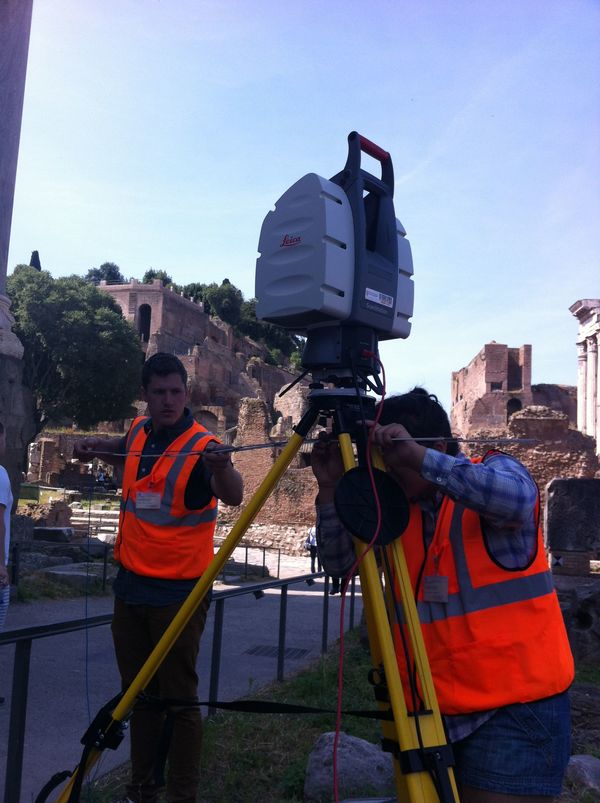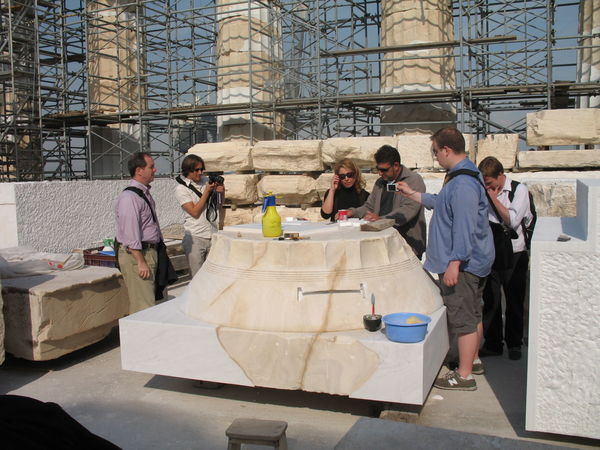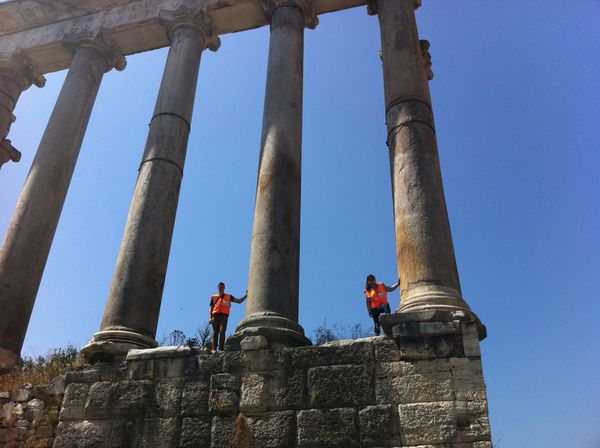Notre Dame announce graduate degree in historic preservation
"It's a no-brainer," seems to be the most common response, followed by "It's about time!" These are frequent reactions to the news that the School of Architecture at the University of Notre Dame is launching a graduate degree program in historic preservation. Since the early 1990s, the School has established an international reputation as a unique university curriculum founded on Classical architecture and traditional urbanism for both undergraduate and graduate students. Since 2007, the undergraduate curriculum (a five-year course leading to the Bachelor of Architecture professional degree) has offered an optional concentration in Historic Preservation.
 Steven Semes lectures on the Classical orders
Steven Semes lectures on the Classical orders
Now the graduate programs (leading to either a professional Master of Architecture or a non-professional/post-professional Master of Architectural Design and Urbanism in either two or three years) will be joined by a new two-year degree, the Master of Science in Historic Preservation. The new course will be open to students holding a previous degree in architecture (professional or non-professional) and is conceived as a specialization for those young architects already on the path to professional careers in architecture, urban design, public service, real estate development, construction or preservation advocacy.
The reason for the common reaction is simple: The extension of the existing curriculum into historic preservation brings to that discipline the unique skills and outlook that a foundation in Classical architecture and traditional urbanism offers. In other words, it will train designers to be preservationists. The new program will likely be the only university program in the world where the students will first learn how to design the kind of architecture they are being asked to preserve, giving them an understanding of our built heritage "from the inside," and fostering the respect for historic places that should be the starting point for preservation policies and treatments.
Just as importantly, the new program will train preservationists to be designers. Those responsible for the care of our historic resources will be equipped to design additions to structures or infill projects in historic districts and landscapes that sustain a continuity between historic and contemporary practices of architecture and urbanism. The curriculum seeks to re-establish the connection between preservation and design long broken by the modernist antagonism between new and old, so that architecture, urbanism and historic preservation can once again be a single discipline united by a common conservation ethic.
People outside the field are largely unaware that few preservation professionals are trained in the design traditions they are asked to preserve. Most have studied traditional styles as "history," but not as "design." This absence of training in the Classical was brought home to me years ago when I worked in a leading preservation firm in San Francisco, where one of the partners had been dubbed "Mister Preservation" by a local newspaper. One day, when a current project was pinned up on the wall and the whole office was invited to offer a critique, I raised my hand and noted the odd proportions of the architrave on the building. Mister Preservation responded by asking, "What's an architrave?" My thought then was: how can you restore an architrave if you don't know what it is? Would you trust a dentist who gave you a blank stare when you asked him about your molars?
 DHARMA (Digital Heritage Architectural Research and Material Analysis) Lab students use high-tech three-dimensional scanning equipment
DHARMA (Digital Heritage Architectural Research and Material Analysis) Lab students use high-tech three-dimensional scanning equipment
The new Notre Dame program aims to send into the field architects who know what an architrave is, not only because they have read about them in books, but because they have designed them – maybe even made one by hand – and understand well their profiles, proportions, use and role in the larger compositions of which they are a part. Students will learn to draw the Classical orders and design with them, as well as mastering all the other parts of traditional buildings. They will learn how traditional towns and cities are laid out, what makes their streets and squares lively, how buildings and spaces work together to create beautiful and sustainable places, and how conservation efforts can help keep historic cities alive. Above all, students learn what preservation is for: it is not simply maintaining documents of past times, but caring for a living heritage that is the valued setting for a meaningful community life into the future.
We have an outstanding faculty. Joining me on campus will be John Stamper for the history of American architecture, Philip Bess will offer urban design studio, Alan Defrees will teach materials and methods of traditional construction and conservation, and Todd Zeiger will lead classes in documentation and research as well as preservation practice. In Rome, Krupali Krusche will direct a design studio; she and Selena Anders will lead a hands-on class in site documentation and fieldwork, and Alessandro Pierattini will organize an international conservation laboratory course. These Rome classes will actively draw upon the unparalleled international expertise available in Rome and the strong connections that the University has fostered with local institutions.
 Students make field trips outside of Italy, including this visit to Athens, where they met the restoration team for the Parthenon
Students make field trips outside of Italy, including this visit to Athens, where they met the restoration team for the Parthenon
The new course of study comprises four academic semesters, plus two summers, the first of which is a month-long preliminary course required of all entering graduate students. This emphasizes the formal language of Classicism for students already trained in the basic skills of drawing and design, and reviews such techniques as perspective drawing, casting shades and shadows, and watercolor rendering. The first semester introduces the classical language of architecture, the principles of traditional urbanism, research methods and documentation, and an elective. The second semester offers a studio in traditional urban design, as well as courses in the history and theory of preservation, historical building materials and methods, and the history of American architecture.
An intermediate summer internship is intended to offer students opportunities for hands-on experience in conservation, either at home or abroad. Here, the program will capitalize on Notre Dame's network of contacts with international institutions to provide unique opportunities for our students. The third semester is spent at our facility in Rome, where students will not only study the magnificent architecture and urbanism of the Eternal City, but will learn from international experts in research and documentation, conservation, restoration, archeology, cultural resource management and allied fields.
A special feature of the Rome experience is student participation in the DHARMA program(Digital Heritage Architectural Research and Material Analysis) led by Professors Krusche and Anders, a high-tech digital documentation project founded in 2007 that focuses on scanning historic sites such as the Roman Forum. The final semester, back on campus, includes a thesis project, a course in professional practice and additional electives. Students will be encouraged to pursue elective classes in a range of other disciplines, such as materials science, art history and law.
 Students participating in the DHARMA Lab make detailed studies of the monuments in the Roman Forum
Students participating in the DHARMA Lab make detailed studies of the monuments in the Roman Forum
The historic preservation field is currently experiencing long overdue debate about theory and practice, and the new Notre Dame graduate program is set to play a leadership role in shaping this debate in the years ahead. An important goal is to recover the comprehensive, multi-disciplinary approach that prevailed in the field until recent decades. As Professor Krusche notes, "Urbanism, architecture and preservation are three fields that work hand-in-hand. One has to learn the other two to do a good job in any one of them. Notre Dame will offer students the opportunity to be equally adept at all three."
The program will also bring together related interests that currently tend to work in isolation: sustainability, New Urbanism, grassroots preservation, construction crafts and traditional architecture. The aim is to prepare professionals with a comprehensive view of the built environment and ready to assume their responsibilities for making our cities more beautiful, sustainable and just.
We look forward to welcoming our first entering class in the fall of 2015. The illustrations accompanying this article show recent students, both graduate and undergraduate, in related existing programs here at Notre Dame. Readers interested in learning more about the program, or who know someone who might be, are invited to visit our website at architecture.nd.edu/historicpreservation. TB